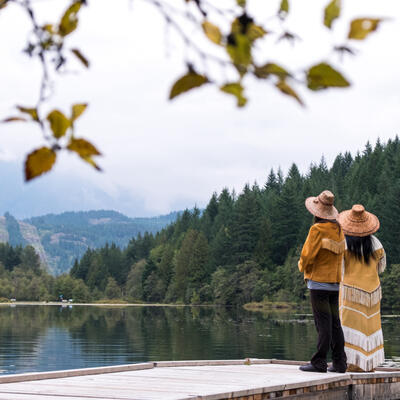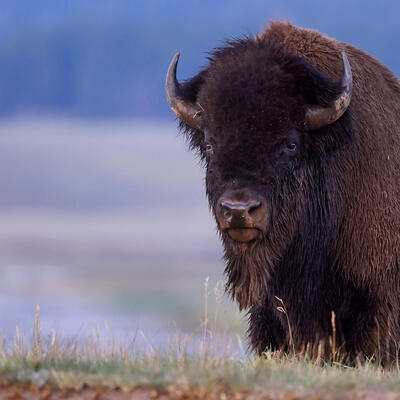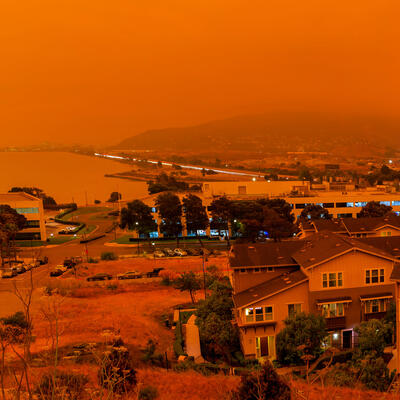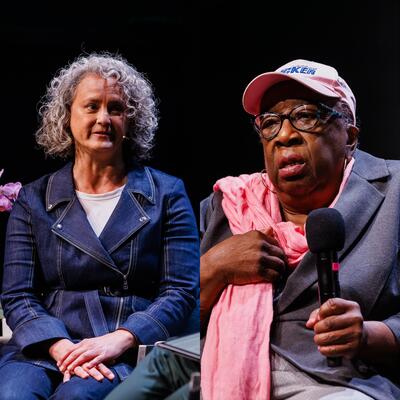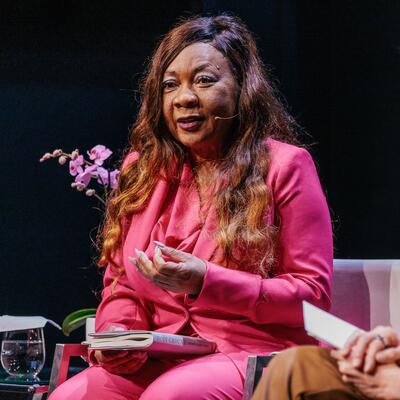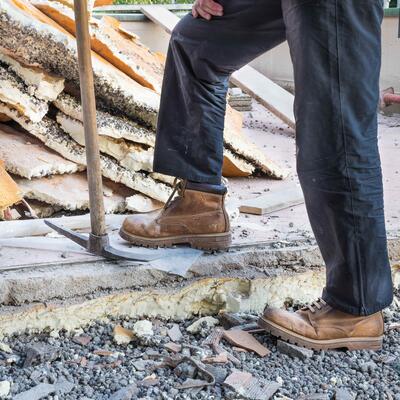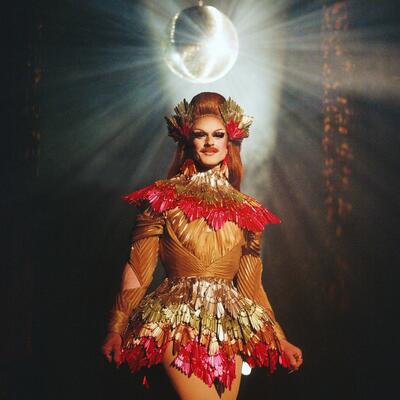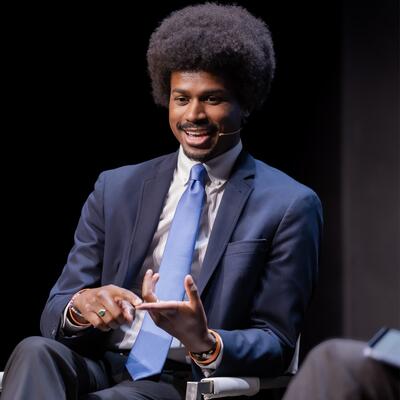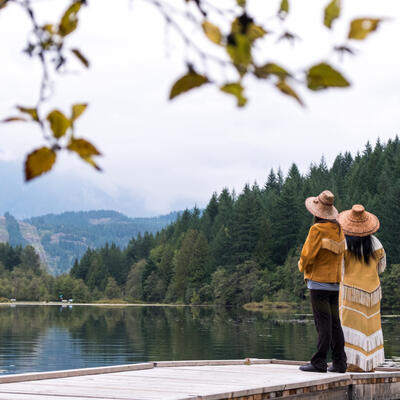
Indigenous Insights on Healing Land and Sky
Guests
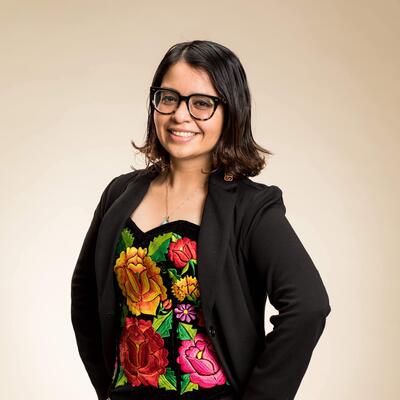
Jessica Hernandez
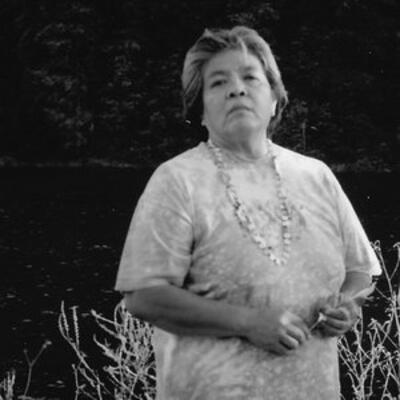
Priscilla Hunter
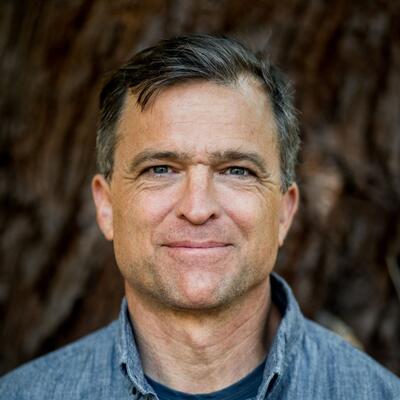
Sam Hodder
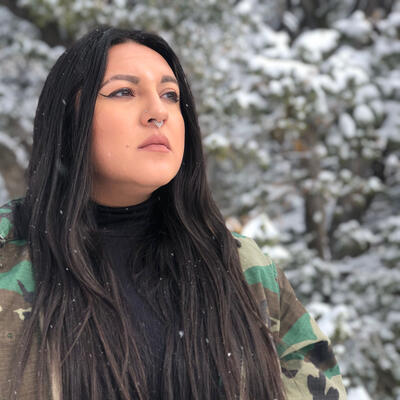
Julia Fay Bernal
Summary
According to the World Bank, land managed by Indigenous peoples is associated with lower rates of deforestation, reduced greenhouse gas emissions, and better biodiversity protection. But in many places, Indigenous people have been displaced from their ancestral lands through outright theft, land grabs, violence and war. The Land Back movement advocates for returning Indigenous lands to Indigenous hands, to dismantle white supremacy and systems of oppression, but that can be difficult to achieve in practice.
Dr. Jessica Hernandez is author of Fresh Banana Leaves: Healing Indigenous Landscapes through Indigenous Science. She describes herself as an Indigenous scientist because of the parallels she sees between the observational methods in Western science and Indigenous ways of knowing the land.
“[The term] Indigenous science kind of shows how as Indigenous peoples we have adapted to technology, to modern times and also continue to adapt, right, especially given that climate change impacts are drastically affecting our environments and our communities,” she says.
Hernandez says a Western settler colonial mentality has contributed to the climate crisis and environmental degradation, partly through the separation of humans from nature.
“When we look at that separation, even when we try to heal from climate change impacts that something that’s ongoing where humans are totally completed, ignored, from natural solutions that are trying to protect our species or our biodiversity in that sense.”
She advocates for a more bottom-up approach to research and conservation between scientists and local communities, particularly Indigenous ones, where the focus of research is driven by what communities need and want, rather than what satisfies the funding opportunities within academia.
For many, living with the impacts of climate disruptions is further complicated by long-standing systems of oppression. Julia Fay Bernal is an enrolled member of the Sandia Pueblo in New Mexico and director of the Pueblo Action Alliance.
“Climate change isn't just about protecting the natural world; it’s also about protecting our culture and who we are because we've resisted against so many colonial forces for so long,” she says.
Her group advocates for the restoration of Indigenous water management practices, which involves what she describes as “the decolonization of water policy.” She draws a lot of inspiration from the long history of her people’s connection to the Rio Grande and their relationship with water as a sacred entity.
“The river, to me, is one of my mothers. And so, I have sort of this innate responsibility to protect her essence, to protect all that she provides for. Because in our culture, being desert-cultured people, water is very significant in terms of abundance and prosperity and longevity,” Bernal says.
In other areas, Indigenous presence is doing more than reconnecting communities with their environments: it is reviving the use and care of traditional plants that protect coastlines and preserve habitat. As Sam Schramski reports, native peoples such as the Seri in what is now northern Mexico have long recognized the nutritional value of eelgrass. Now this plant, found in many places in the world, is also being recognized for its value as a means of drawing down carbon dioxide and sequestering it on the ocean floor.
In the U.S., there are cases of returning land to Indigenous stewards. Earlier this year, the Save the Redwoods League transferred 523 acres of coastal redwood forest to the InterSinkyone Tribal Wilderness Council, land where some of their ancestors lived for generations.
This is the second time the League has transferred land in Mendocino County’s “Lost Coast” region to the InterTribal Council for joint conservation and stewardship. Council Chairwoman Priscilla Hunter says this latest gift of land builds upon the tribes’ conservation track record.
“To be able to add this place as provided or given to us, to just take care of. It means a blessing for us, for Indian people. A whole blessing that we were given this land that we can protect. And be, you know, leave it alone and let it heal.”
Related Links:
Fresh Banana Leaves
Redwoods Land Transfer
InterTribal Sinkyone Wilderness Council
Pueblo Action Alliance
Full Transcript
Greg Dalton: This is Climate One. I’m Greg Dalton. Climate science often focuses on data rather than lived experiences of impacts. One Indigenous scientist wants to change that.
Jessica Hernandez: In order for us to create more justice and just solutions that are more holistic and will address our past histories, it's important to incorporate those lived experiences, to incorporate those stories. (:11)
Greg Dalton: We also need to elevate and respect Indigenous ways of knowing the land.
Julia Bernal: The river to me is one of my mothers. And so, I have sort of this innate responsibility to protect all that she provides for. (:12)
Greg Dalton: That can mean confronting systems of oppression that have made the climate crisis worse.
Julia Bernal: Climate change isn't just about protecting the natural world; it’s also about protecting our culture and who we are because we've resisted against so many colonial forces for so long. (:12)
Greg Dalton: Indigenous Insights on Healing Land and Sky. Up next on Climate One.
---
Greg Dalton: This is Climate One, I’m Greg Dalton.
According to the World Bank, land managed by Indigenous peoples is associated with lower rates of deforestation, reduced greenhouse gas emissions, and better protection of biodiversity. But in many places Indigenous people have been displaced from their ancestral lands, through outright theft, land grabs, violence and war. The LANDBACK movement advocates for putting Indigneous lands back in Indigenous hands to dismantle white supremacy and systems of oppression, but that can be difficult to achieve in practice.
Still, across the country we can find examples of land access, stewardship and ownership being restored to Indigenous people–and more conversations about involving tribal nations in conservation and climate resilience efforts.
For example, The National Park Service recently formalized an agreement giving the Cherokee Nation permission to once again gather plants along the Buffalo River in Arkansas–something they had done for generations until the agency took over the river in the early 70s and made it illegal. And later in the show, we’ll look at how a non-profit worked to transfer land back to a tribe in Northern California.
Dr. Jessica Hernandez is a transnational Indigenous scholar and scientist, and author of Fresh Banana Leaves: Healing Indigenous Landscapes through Indigenous Science. She spoke with Climate One’s Ariana Brocious about different ways of knowing.
PROGRAM PART 1
Ariana Brocious: You describe yourself as an indigenous scientist. Can you help us understand how you define that and what it means to you?
Jessica Hernandez: So, one of the main reasons why I identify as an indigenous scientist is because when I see how Western science is conducted especially in the academy is very similar to how indigenous science or indigenous ways of knowing had been formulated where you know we have basically derive our knowledges since time immemorial through observations through kind of similar methods so, the scientific method they uses. And often times when I use the word traditional ecological knowledge, especially in Western science settings. Most of the time most scientist kind of focus more in the traditional components so they continue to speak about indigenous peoples in the past tense. And I think that with indigenous science its kind of shows how as indigenous peoples we have adapted to you know technology to modern times and also continue to adapt, right, especially given that climate change impacts are drastically affecting our environments and our communities. How has the settler colonial mentality and relationship with nature contributed to the climate crisis and environmental degradation that we’re experiencing today?
One of the ways that I think it has contributed to that is the separation from humans from nature. And I think they’re oftentimes, even when we look at conservation was just trying to address those climate change impacts or try to protect animal or plant species. Humans are always kind of erased from that equation. So, when we have marine protected areas when we have protected land areas. Humans are not allowed to kind of step foot in it because it’s kind of protecting a certain animal or species in the glass box without human interaction. And I think that when we look at that separation even when we try to heal from climate change impact that something that’s ongoing where humans are totally completed, ignored, from natural solutions that are trying to protect our species or our biodiversity in that sense.
Ariana Brocious: So, for people who don't know, I was hoping you could explain the farming practice of milpas and how that reflects indigenous land practices.
Jessica Hernandez: Well, so our milpas have been in our community since time immemorial they’re like an ancient tradition where we plant our corn our squash and our bean. So, it’s kind of very similar to the Three Sisters systems that many Southwest indigenous communities of the United States kind of practice. So, through the milpas it does not require a lot human labor. However, we still practice traditions and prayers and we still kind of do like minimal human labor like removing some of the invasive species kind of feeding some of the animals, making sure that you know the corn, squash and beans are doing great. And then we also harvest other traditional foods and plants that kind of, you know, have a strong relationship with those plants, right. So, through that we’re able to grow our traditional foods and kind of feed our entire communities. And I think that it kind of shows the nuances that you know western agricultural practices kind of fail to do, which is, you know, introducing more of those monocultural practices where we have plantations whether be just focusing on one crop species versus our milpas kind of have that rich biodiversity where they also become ecosystems to the animals that we consume, such as grasshoppers, which is our big thing in Oaxaca and armadillos and other small animals that we also consume in our traditional diets as well.
Ariana Brocious: Right. So, there's a big distinction big difference between this traditional practice of bio diverse integrated farming and then you know this more recent, I suppose, within the last century practice of mono cropping these plantations of bananas or coffee. And I was gonna ask you how the latter how these big plantations, including the role of multinational corporations like Monsanto have contributed to the displacement of indigenous peoples from their homelands in these places.
Jessica Hernandez: One of the ways is just through land grab. So, like, you know, a lot of our lands were stolen and kind of privatized so that they can you know the government could sell them to these international corporations through land grab. So, they got thousands of acres of land that, you know, is now being owned by these private organizations. So, one of the things that I address in the book Fresh Banana Leaves is even how the Civil War that started in Central America was as a result of the oppression that these agricultural corporations were enacting on indigenous peoples where labor was being exploited and you know they were just becoming more rich the international agricultural corporations and its owners. While, you know, indigenous peoples were being oppressed and they were being kind of displaced from their lands because their lands were no longer owned by them. They were sold to international entities. And as a result of that indigenous communities of Central America and I’m referring to Honduras, Guatemala and El Salvador when I mention Central America. They decided to kind of like build a resistance movement to kind of address these oppressions and these disparities. However, because you know the government kind of use the fear that is still plays a big role in our society which is communism. They were able to get support from the United States, Canada and other nations kind of silenced indigenous peoples and target indigenous Mayan communities from these countries. And as a result of that, now the United Nations has labeled that a genocide because it was specifically targeting indigenous peoples who were trying to reclaim some of their rights and land specially land rights in Central America.
Ariana Brocious: Right. There's a lot of parallels I think between the manifest destiny Western expansion in the US that occurred in, you know, 200 years ago and the land grabs and the displacement of indigenous people here in the US, including for things such as the national parks. And then this much more recent history we’re talking the 70s and 80s when this was happening. And, this very similar kind of processes are happening not very far from our borders. So, as you write about in the book your father survived this brutal violence of the war in El Salvador. He escaped at age 11 and he credits a banana tree for saving his life from a bomb. How is that story influenced your relationship with nature?
Jessica Hernandez: I didn't really understand how it had influenced me specially at a young age, right, because I was just like oh, this is the story my father is telling me like you know, my level when I was young and he will share these stories with us, you know, it didn’t’ allow me to understand it. But as I grew older I kind of realize that nature protects us as long as we protect nature. And that doesn’t necessarily apply to just our animal species. It also applies to our plant relatives or species. And in this case, my father built a strong relationship with this banana tree because it kind of became his sanctuary where he will climb the banana tree that was in his encampment and kind of escape his harsh realities. So, as a child, right, he was seeking that sanctuary to escape, well, he was actually facing in the present time or his real life. And through this banana tree like he will sing to it, he will pray to it and during three years into the war when he was 14 his encampment was located by the military. And as a result, they bombarded the entire encampment. So, his first instinct was to kind of seek refuge under this banana tree and thought his life was gonna end And instead of like the bomb kind of igniting when it fell on the tree. He saw how the leaves kind of wrapped themselves in a way that preventing the bomb from igniting. And often times, you know, we tend to question like, oh maybe it was a bomb that malfunctioned or it wasn’t generated correctly that it wasn’t going to explode to begin with. But for my father his teaching kind of portrays that, you know, the banana tree protected him and saved his life. And its kind of, you know, was the ancestor that kind of allowed us to be alive today even the future generations the generations that came after him, which is my generation, my brother's generation things like that.
Ariana Brocious: That's a powerful story. How did it feel then to grow up in the United States, knowing the US helped this Salvadorian government in the Civil War, with these targeted killings and massacres against citizens largely indigenous people?
Jessica Hernandez: I think that it has always foster like love and hate relationship with this country, especially the government. And for my father, ironically the United States and Canada even though they were responsible they're the ones that gave a lot of political asylum to refugees or were escaping the war. They kind of take some accountability but not necessarily the responsibility that came with that. And it kind of was, you know, it was difficult, right, especially my father knowing that this was a country that played a major role in the killings of a lot of our relatives and the killings of a lot of our community members. But I think that ultimately it was the place where he could find a safe haven because even in Mexico, there still this xenophobia, right, against Central Americans. But as a result of that because my parents are the only ones displaced from our relatives. We were, you know, we will go back home a lot and home was Oaxaca and my mom is from Oaxaca and my father is from El Salvador. So, it was kind of like growing into three different countries, right, because they were all separated by borders as well.
Ariana Brocious: Right. So, pivoting back a little bit to your academic training and your work as a scientist, you write that you had to cite your lived experiences under the guise of Western academia “Because oral histories are not as valuable as peer-reviewed journals.” So, how can that gap between indigenous knowledge and Western science be bridged?
Jessica Hernandez: I think it’s important for you know, especially scientist to understand that lived experiences are also as valid and as important to incorporate, especially in the sciences. Like for instance as a climate scientist when I teach climate science, we often focus more on the data points or like the numerical data sets that allow us to graph the impacts of climate change but yet we're still ignoring those lived experiences those stories of people who are already facing the impacts of climate change. And I think that in order for us to create more justice and just solutions that are more holistic and will address our past histories, especially as the colonial institution. It's important right to incorporate those lived experiences to incorporate those stories that do not necessarily undergo the Western academic disciplines where you know you have to peer review published your findings. Or you have to write a book right in order for people to understand the nuances the lived experiences and personal storytelling also portrays. And it’s needed for, in order for us to actually mitigating that to climate change in this era.
Ariana Brocious: Similarly, your critical of what you term helicopter research, especially in conservation and some other fields. So, what would have more bottom-up approach look like to you?
Jessica Hernandez: Well, the more bottom-up approach will mean that scientists and researchers take more time to actually build those relationships with the communities. So, often times in science, right, we want to write grants so we come up with a research project that might not necessarily support or benefit the communities more supporting or benefiting our own careers or our own access to these grants are being awarded these grants that will allow us to do the work. And I think that for us to kind of remove ourselves from the helicopter research we have to start with building community relationships and then allowing the communities to kind of dictate or determine what kind of research projects they will like to see or what research projects will benefit their communities.
Ariana Brocious: Help us understand the term eco-colonialism and how it gets in the way of a more intersectional approach to environmental stewardship.
Jessica Hernandez: So, I think eco-colonialism like doing kind of addressing that and dismantling eco-colonialism kind of ties back to the land back movement where you know we seen eco-colonialism it's certain people who have the power and privilege to determine how we manage into our landscapes. Clearly, that hasn't been very helpful because you know we’re still experiencing a lot of biodiversity loss a lot of land loss. We’re still seeing how climate change is impacting our relationships with the land because it's displacing people. It's you know, displacing all sort of our animal relatives. And through the dismantling of eco-colonialism it will allow indigenous peoples to steward and care take of their land. Not necessarily owned it right, because owning the land is not an indigenous aligned value but kind of more determining how we steward and caretake for our lands. And I think that you know when people ask, like why should that be the case, you know, it’s always important to cannot kind of redirect people to the fact that indigenous people steward 80% of the world's biodiversity and 50% of the world's biodiversity is located in my country, which is, you know, because they are the Latin American region. And yet, when we look at the violence and how safe it is for indigenous environmental leaders in Latin America, you know, we have the highest rates of murders, violence, disappearance of our leaders because you know there's all these political entities that do not want us to protect 50% of the world's biodiversity, right.
---
Greg Dalton: You’re listening to a Climate One conversation about Indigenous landscapes. If you missed a previous episode, or want to hear more of Climate One’s empowering conversations, subscribe to our podcast wherever you get your pods. Coming up, the importance of moving away from romanticized ideas of Indigenous people:
Jessica Hernandez: That stereotype is that of the ecological noble savage, where every indigenous person is portrayed as this pristine magical creature that's prancing with nature. So, I think it is kind of undoing that stereotype and realizing that not all indigenous peoples have strong relationships with nature. (:15)
Greg Dalton: That’s up next, when Climate One continues.
---
Greg Dalton: This is Climate One. I’m Greg Dalton, and we’re talking about healing Indigenous landscapes.
Let’s get back to Ariana Brocious’s conversation with Jessica Hernandez, Indigenous scholar and scientist.
PROGRAM PART 2
Ariana Brocious: Here in the US, the government is supposed to consult with federally recognized tribes on projects that affect them or their lands, but it doesn't always do so or not to a degree that tribes feel is adequate. How does that compare with Mexico's legal relationship with tribes?
Jessica Hernandez: Yeah, so in Mexico it’s a little bit more different because we don't have tribal sovereignty. And I think the sovereignty that our communities our pueblos have kind that foster has been by themselves like more independent without the legal paperwork. And in Mexico where we practice a lot of sustainable self-determination where we don't necessarily have to go to the political round to get our rights to advocate for our rights. So, I think that when we look at Mexico when we look at Central America our indigenous communities are always constantly fighting because we don't have those legalities right to protect our land rights or indigenous right as people. And living in Seattle I’m witnessing how the Duwamish Tribe that’s not federally recognized but Seattle is part of their ancestral lands. How they're advocating for those rights and it kind of parallels a lot to what my communities in Mexico and El Salvador continue to do to this day.
Ariana Brocious: How can non-indigenous environmental and conservation groups work in concert with indigenous communities and respect tribal knowledge without romanticizing it?
Jessica Hernandez: One of the ways is that I can think of is just like undoing the fact that we all think that indigenous peoples have this romantic relationship with nature because for many of us, right, we’re in the process of reclaiming our relationship with nature whether because we were displaced or because you know many of our people are also being raised in cities. So, you know, the nature and human experiences and relationships are different than those of us who are raised in our traditional homelands. And I think that you know that stereotype is that of the ecological noble savage for every indigenous person is portrayed as this pristine magical creature that's prancing with nature that has very this, in tune relationship with nature. So, I think it is kind of undoing that stereotype and realizing that not all indigenous peoples have strong relationships with nature.
Ariana Brocious: We’ve talked about having better relationships with tribes with listening to indigenous people about what their concerns might be before Western scientists come in and decide what some research project should be. Even with the flaws in the conservation movement it’s still sorts of the avenue in space we have to work in addressing a lot of these concerns around biodiversity and environmental resources and problems. So, are there ways that you would suggest we go about taking on projects collaboratively that can really help us get down the road in addressing these past wrongs?
Jessica Hernandez: I think you like hit the nail right in its head, right. Because when you’re talking about like collaboration because I think that oftentimes as scientists and conservationists we think that we know what's best for the community. And I think that oftentimes in conservation right we look at models as one size fits all when in reality that's not the case. And I think that by working with indigenous communities It would allow us to create more just solutions that are not necessarily going to harm the indigenous communities the most. And I think that oftentimes indigenous communities are trying to address climate change mitigation efforts and adaptation efforts, but unfortunately, they don't have the funding to do so. So, I think that it’s important right for us to leverage our power and position especially a scientist conservationist who have the means to maybe apply for grants to kind of support the communities and also kind of step back right if they want to lead it just allowing them to lead those efforts. And you know that's how we can support without necessarily kind of co-opting the movements or kind of taking over as the voice for them, right.
Ariana Brocious: You mentioned the land back movement. Do you think we need to put more US land under the management of indigenous people? And if so, how should that be done and what would that may be accomplish?
Jessica Hernandez: So, oftentimes, the land back movement I think that it’s something that maybe we’re not gonna see in our lifetime, because obviously you know the people who can return the land to indigenous peoples don't want to do that especially when we talk about governments. But one of the ways it can be done is that you allow the indigenous communities from those lands to start stewarding and care taking for the lands, right. Because oftentimes, you know, even when we try to practice our ceremonies in certain locations because there are national parks or they’re urban parks we have to get special permits. If we want to harvest medicine or medicinal plants we’re not allowed to, right, because it’s city property, government properties. So, I think that even starting off with allowing access to lands, especially to indigenous peoples who need it for ceremonial practices to gather their medicines will be one of the ways and I think that will be the first step. But through the land back movement it will allow indigenous communities who have that since time immemorial history and those lands to steward and care take for the lands and kind of enact those management practices that they want people to follow.
Ariana Brocious: The appointment of Deb Haaland as the first indigenous secretary of the interior has been hailed as a major step forward in recognizing the harmful past of land management in the US. In your opinion, what's been the impact of having her in that position?
Jessica Hernandez: Well, the impacts that I’m seeing, especially as someone who does policy work as well is that the recognition of traditional ecological knowledge or indigenous knowledges or sciences as like I like to refer to it. we saw how Pres. Biden passed the presidential memorandum where he was like, oh, we should actually look at traditional ecological knowledge, especially when it comes to managing our lands, And I think that you know that’s something that we hadn’t witness before especially coming from the White House where they're acknowledging indigenous science and indigenous knowledge as something important and crucial especially when it comes to managing and stewarding our landscapes and our environments, especially as we continue to face climate change impacts.
Ariana Brocious: Jessica Hernandez is a transnational indigenous scholar and scientist and author of Fresh Banana Leaves. Thank you so much for joining us on Climate One.
Jessica Hernandez: Yeah, thank you for having me. And it was an honor meeting you.
Greg Dalton: Today we’re discussing indigenous ways of knowing and caring for the natural world, especially in light of the climate crisis.
Greg Dalton: Eelgrass seed, or xnois [hee-NOIS] in the Comcáac [kohm-KAAK] language, may be the newest food movement on the coast of the Gulf of California. It’s even raised the interest of internationally renowned chefs half a world away. But eelgrass has been part of the indigenous Comcáac [kohm-KAAK] – also known as Seri [Ce-ree]– culture for hundreds of years. Possibly even longer. And as Sam Schramski reports, eelgrass may have another unacknowledged value: carbon sequestration.
EELGRASS FEATURE (~6:30)
[SFX1] [singing]
[SFX 2] [boat on the sea]
Sam Schramski: I’M AT AN ANNUAL COMCÁAC CULTURAL FESTIVAL IN AN OCEANSIDE TOWN IN SONORA, IN NORTHERN MEXICO. THIS YEAR, THE INDIGENOUS GROUP IS ALSO HIGHLIGHTING XNOIS, OR EELGRASS SEED. IT IS PART OF THEIR PEOPLE'S HERITAGE, PRESENT IN SONGS AND STORIES FROM THE COMMUNITY'S WOMEN ABOUT ITS PLACE IN NAVIGATING THE SEA. AND AFTER AN ABSENCE OF A GENERATION OR MORE, EELGRASS SEED IS BEING REVITALIZED AS A TRADITIONAL FOOD IN THIS CELEBRATION AND A RELATED COOKOFF EVENT. TO COMMUNITY LEADER ERIKA BARNETT, EELGRASS IS FULL OF MEANING,
Erika Barnett: What does eelgrass seed mean to me? It’s something very important. Important for this community. For our ancestors, it was something very special for them. So, it’s therefore very important now to the Comcáac people as well.
Sam Schramski: THE PLANT ITSELF PROVIDES HABITAT FOR ALL KINDS OF ANIMALS FROM SEA TURTLES TO SNAILS, AND LIKE OTHER SEAGRASSES, CAN HELP BUFFER COASTLINES FROM CLIMATE IMPACTS. BUT THE CLIMATE CHANGE MITIGATING PROPERTIES OF SEAGRASSES ARE TRICKY TO GAUGE. ESTIMATES FROM THE HIGH LEVEL PANEL FOR A SUSTAINABLE OCEAN ECONOMY HAVE SUGGESTED THESE PLANTS MAY REPRESENT UP TO HALF OF THE WORLD'S 1.4 BILLION TONS OF GREENHOUSE GAS MITIGATION POTENTIAL IN COASTAL AND MARINE ENVIRONMENTS.
Sam Schramski: UNLIKE MANGROVES OR KELP FORESTS OR EVEN SALT MARSHES—ALL OF WHICH HAVE ALSO BEEN IDENTIFIED AS BLUE CARBON SINKS THAT COULD STEM THE TIDE AGAINST CATASTROPHIC CLIMATE CHANGE—SEAGRASSES ARE OFTEN ON THE MOVE. THEY GROW, PHOTOSYNTHESIZE, AND DECOMPOSE INTO SEDIMENT ON THE OCEAN FLOOR OR IN AN ESTUARY. ALSO, MOST THE WORLD’S POPULATIONS OF EELGRASS ARE PERENNIAL—BUT THOSE OFF THE COAST OF SONORA IN COMCÁAC TERRITORY ARE ANNUAL – IN THEIR LIVING PRIME FOR ONLY ONE YEAR. UNIVERSITY OF CALIFORNIA- RIVERSIDE BOTANY PROFESSOR, EXEQUIEL EZCURRA, SAYS ALL THIS MAKES IT DIFFICULT TO ESTIMATE AND MEASURE THE CARBON MITIGATION POTENTIAL OF EELGRASS.
Exequiel Ezcurra: There is a huge potential role of seagrasses in all of this. The only problem with seagrasses is that they have been so little studied, they're really understudied. So there's a lot we don't know about seagrass. It's like we were totally in the blind about mangroves on carbon sequestration 20 years ago. Seagrasses have taken longer. And one of the things we need is to start studying them seriously.
[SFX3 festival dancing and music]
Sam Schramski: THE COMCÁAC HAVE BECOME AWARE OF THE BLUE CARBON VALUE OF THIS PLANT. BUT QUESTIONS REMAIN ABOUT HOW TO CAPTURE MARKET VALUE FOR EELGRASS. IN A BLUE CARBON FRAMEWORK, THIS WOULD TYPICALLY COME IN THE SHAPE OF CARBON CREDITS–PAYMENTS FOR ECOSYSTEM SERVICES FROM AS FAR AWAY AS WALL STREET OR LONDON. OFFSET MARKETS HAVE GAINED NEW ATTENTION RECENTLY AS CORPORATIONS FROM FROM DISNEY TO CHEVRON HAVE STARTED SETTING AMBITIOUS CARBON REDUCTION GOALS. BUT CARBON CREDITS OFTEN FAVOR RESTORATION PROJECTS THAT GENERALLY START FROM THE POINT OF A DEGRADED ECOSYSTEM AND LATER SHOW SIGNS OF RECOVERY AS RETURN ON INVESTMENT.
Todd Lemon: In a way we have to perform triage….
Sam Schramski: THAT’S TODD LEMON, CO-FOUNDER OF A MANGROVE RESTORATION EFFORT ON THE OTHER SIDE OF THE GULF OF CALIFORNIA CALLED "MARVIVO." HIS GROUP IS PLANNING ON BUILDING A MODEL THAT COMBINES CARBON CREDITS AS ONLY PART OF THE ANSWER. HE IS PARTICULARLY UNSPARING ABOUT HOW LITTLE BENEFIT IS DERIVED BY GOOD STEWARDS IN THE CURRENT APPROACH TO MARKET-BASED SOLUTIONS TO CLIMATE CHANGE.
Todd Lemon: The real challenge is that the standards are written such that you are not supposed to be able to get credit from carbon if the area is not under imminent threat. We've never agreed with that. I think that bar is misplaced. I won't even say it's too high. It's just plain misplaced. You, you. You really shouldn't be forced to wait until it's too late or near too late before you can claim that there's an imminent enough threat that if you had not intervened, you know, the mangroves wouldn't have been saved and therefore, you're allowed to generate carbon credits.
Sam Schramski: COMCÁAC PEOPLE COLLECT THE EELGRASS SEED THROUGH WILD HARVESTING, RATHER THAN ACTIVELY GROWING MORE OF THE PLANT. IN OTHER WORDS, THE SOUND CONSERVATION OF EELGRASS BY THE COMCÁAC MAY NOT EXACTLY YIELD INCOME FOR THEM.
AT THE FESTIVAL AND A RELATED COOKING EVENT FEATURING CHEFS FROM 4 NATIONS (INCLUDING THE COMCÁAC), IT WAS THE BROWN-GREEN EELGRASS SEED, RATHER THAN BLUE CARBON, ON MANY PEOPLE’S MINDS. XNOIS IS PACKED FULL OF ENERGY AND NUTRITION. ETHNOBOTANIST AND WRITER, GARY PAUL NABHAN, ONE OF THE COORDINATORS FOR THE EVENTS, POINTED OUT THAT ONLY FOCUSING ON CARBON SEQUESTRATION LOSES SIGHT OF ALL THAT THE PLANT AND THE SEED FULLY REPRESENT IN COMCÁAC, OR SERI, CULTURE.
Gary Nabhan: Well, the Seri are among the poorest people in Sonora. And to have something that's speculative or aspirational 10 to 20 years out may not be enough of an incentive for them to be involved in this. But, you know, they not only understand that it's directly a food, but it's also a key link in the food chain for the shellfish and fish that is their biggest source of income.
Sam Schramski: WHILE THE COMCÁAC HAVE HARVESTED EELGRASS FOR GENERATIONS, THIS IS FAR FROM THE ONLY PLACE IN THE WORLD WHERE IT GROWS, AND OTHERS ARE STARTING TO TAKE NOTICE OF THE PLANT’S POTENTIAL. EELGRASS HAS GAINED STEAM AS A CULINARY "SUPERFOOD" IN SPAIN, WHERE RENOWNED CHEF, ÁNGEL LEÓN, HAS MADE IT A FOCUS OF SOME OF HIS DISHES. HE’S ALSO DRAWN AWARENESS TO ITS CONSERVATION AND BLUE CARBON VALUE.
[SFX6-Seri dance and signing]
Sam Schramski: DESPITE REAL THREATS FROM CLIMATE CHANGE HERE IN SONORA, LIKE HOW COASTAL EROSION WILL DISPLACE HOUSES, OR HOW CERTAIN FISHERIES WILL CONTINUE TO DIMINISH, THE PRESSURE TO MONETIZE BLUE CARBON STILL SEEMS VERY FAR FROM PEOPLE’S DAILY LIVES.
Erika Barnett: It's about learning and also replicating the eelgrass harvest in future generations. And it is very important and very, very—I do not know how to say it. For me it is very exciting to do this. And we have seen how the elders have come closer to us in this process. [De aprender y también replicarlo con las futuras generaciones. Y es muy importante y muy, muy. No sé cómo decirlo. Para mí es muy emocionante hacer esto porque hemos visto que la gente mayor se nos ha acercado.]
[SFX8—eelgrass toasting cont'd.]
Sam Schramski: FOR CLIMATE ONE, I’M SAM SCHRAMSKI REPORTING IN KINO BAY, MEXICO.
Greg Dalton: When talking about Indigenous stewardship, the concept of “land back” frequently comes up – the idea of restoring or returning land ownership and management to the people who historically inhabited those lands. Climate One’s Ariana Brocious tells us about one recent example of this in northern California.
REDWOODS FEATURE (~6:00)
Ariana Brocious: Earlier this year, Indigenous groups in Mendocino County were granted ownership of 523 acres of coast redwood forest where many of their ancestors lived for generations.
Sam Hodder: It is both the right thing to do, and it is the best way to achieve our conservation goals. (:07)
Ariana Brocious: That’s Sam Hodder, president and CEO of the Save the Redwoods League, a conservation organization that acquired the property and donated it to the InterSinkyone Tribal Wilderness Council. This is the second time the League has transferred land in Mendocino County’s “Lost Coast” region to the InterTribal Council for joint conservation and stewardship.
Sam Hodder: The opportunity to restore Indigenous guardianship to a land that has been in the territory of the Sinkyone people for thousands of years. It really is a fulfillment of the objective of conservation to restore land to its ecological condition and to also address the cultural restoration that can be achieved through rematriation. (:23)
Ariana Brocious: Through killings, conflict and land theft, white settlers forced the original Sinkyone people from this region in the mid-1800s, according to the tribal council's former executive director. That was followed by decades of destructive commercial logging of old-growth trees and related environmental damage. The InterTribal Sinkyone Wilderness Council, composed of ten tribal nations, formed in 1986 as a cultural land protection organization dedicated to restorating coastal forest and marine ecosystems and advocating for traditional cultural land and water rights. A decade later, it established the InterTribal Sinkyone Wilderness on nearly 4,000 acres of traditional land acquired from The Trust for Public Land. Council Chairwoman Priscilla Hunter says this latest gift of land from the Redwoods League builds upon the tribes’ conservation track record.
Priscilla Hunter: To be able to add this place as provided or given to us, to just take care of. It means a blessing for us, for Indian people. A whole blessing that we were given this land that we can protect. And be, you know, leave it alone and let it heal. (:22)
Ariana Brocious: Hunter says this project also restores access for today’s Sinkyone people to land inhabited by their ancestors.
Priscilla Hunter: The land was taken from them. And not just taken, but they were killed for it. And our children were killed, and our family was killed. Our songs were taken and dances. So all the above land that was taken from us, we didn't have the joy of having a forest to run into and play, our people now, right? Cause we didn’t have it. (laughs) It was gone. You couldn’t only have access to gather the foods or plants or to do our gathering. Because it’s not our land, so we’re trespassers. Imagine that. (1:01)
Ariana Brocious: In both land transfers, the Save the Redwoods League established conservation easements on the property in agreement with the InterTribal Council to protect against logging and development. Sam Hodder says the ecological stewardship goals of both groups are closely aligned–focused around protecting the redwood forests and habitat for native and endangered species, including coho salmon and the northern spotted owl.
Sam Hodder: We have the same goals of letting nature lead, letting the land lead, and having that guardianship advanced with tribal ownership really tells a much fuller story about what land conservation can do. (:19)
Ariana Brocious: The Council and League plan to apply a blend of Indigenous place-based land guardianship principles, conservation science, climate adaptation and fire resiliency approaches to the area. Hodder says this property, which will once again be known by its Sinkyone name meaning “Fish Run Place,” adds to the larger matrix of protected critical land in northern California.
Sam Hodder: Coast Redwood, old growth, sequesters, more carbon per acre than any other forest in the world. So the conservation opportunity and the need to accelerate the pace and scale of conservation of the Redwood forest is a critical climate investment. (:17)
Ariana Brocious: Beyond this project, Hodder points to a growing recognition in California and elsewhere of the need for more tribal engagement in conservation, and the funding to support it. Chairwoman Priscilla Hunter says the land donation helps heal some of the past, and offers a new place for tribes to gather and connect with the land.
Priscilla Hunter: And it's beautiful. We would have a place that we can go way out there and have our ceremonies. And you can really feel the spirit because it's way out there, right. And it's so up in the mountain. And so is the mountain spirits, and it was really refreshing to have that. (:28)
Music: in
Greg Dalton: Today we’re talking about reclaiming Indigenous relationships with the land. Coming up, we hear from Julia Bernal [ber-NAHL], a member of the Sandia Pueblo in New Mexico advocating for better water access - and management - in her community.
Julia Bernal: After time I realized that my role in this life was to advocate for water. Because our cultural views to the river are very significant to relationships with our mothers and as a daughter I just felt very compelled to pursue a lifelong career in water resources. (:27)
Greg Dalton: That’s up next, when Climate One continues.
---
Greg Dalton: This is Climate One. I’m Greg Dalton.
Julia Fay Bernal [ber-NAHL] grew up a member of the Sandia Pueblo Nation, between the Sandia Mountains and Middle Rio Grande Valley in New Mexico.
Julia Bernal: I had a wonderful childhood growing up with a family that farms a family that tends land a family that has very strong roots to water and agriculture. Grew up riding horses playing outside getting dirty, getting cuts and bruises and scrapes. So, it's definitely an upbringing that I really, really cherish.
Greg Dalton: Today she’s director of the Pueblo Action Alliance, which advocates for the restoration of indigenous water management practices. That involves what she describes as “the decolonization of water policy.” She draws a lot of inspiration from her homelands and the long history of her people’s connection to the Rio Grande.
PROGRAM PART 3
Julia Bernal: At a time before colonization this Middle Rio Grande Valley had multiple Tewa speaking villages. Now, only two remain. But pueblo people through time and experience on the land came to realize that settling along the Rio Grande was a good way for us to sustain life. A good way for us to maintain healthy watersheds, come up with irrigation systems and become farmers and settle along the waters. All of these tribes have a very significant and cultural relationship with the river and the water. And we’re all very different in the sense but we definitely do share that same core value of viewing our water as very sacred.
Greg Dalton: What do the river mean to you personally as you were growing up?
Julia Bernal: I grew up closer towards the river. So, I had a lot of access to playing along the acequias and as I got older, venturing a little bit further out to actually go to the main stem of the Rio Grande. And for me going there was always a really, I guess comforting experience being in relation with our river mother and maybe not fully understanding the cultural aspects of our river and how it plays in our traditions. But as a young person I knew that there was an innate connection that I felt with our river and even as I started growing up and experiencing adulthood at times in my life where I felt like I was lost or that I didn't have the right direction in terms of career or school or you know whatever measures success. I would find myself at the river contemplating you know what my next move is going to be and you know after time I realize that my role in this life was to advocate for water. Because our views our cultural views to the river are very significant to like relationships with our mothers. And as a daughter I just felt very compelled to pursue a lifelong career in water resources.
Greg Dalton: Did the river speak back to you?
Julia Bernal: I think that I have always spoke into the river and maybe it's more been that kind of relationship. But I think that the river to me is one of my mothers. And so, I have sort of this innate responsibility to protect her essence to protect all that she provides for. Because in our culture being desert cultured people, water is very significant in terms of abundance and prosperity and longevity. So, our water is very central to a lot of our core teachings.
Greg Dalton: So, you grew up and went off to college. What did you study and what was your college experience like?
Julia Bernal: Yeah, so, I went to the University of Redlands. I honestly was really surprised that I got into a college because I was not a very good student growing up. I definitely didn't have much direction, but I will say that my college experience was very hard. It was very associated with a different kind of culture shock. I felt like I couldn't fully express who I was because people in Southern California didn’t understand like what a pueblo indigenous person is or was or are. And navigating that academic system was really challenging. But along the way, I did meet some folks that worked with Southern California tribes and made some more connections in that world. And now it's coming full circle because a lot of our studies around water do also affect tribes not just in New Mexico but in Arizona and California within the sector of water tribal communities and leadership are going to be very integral for future planning.
Greg Dalton: And after you graduated what happened next?
Julia Bernal: I was at the river because I didn't know what I wanted to do. That was a really hard time for me. It took a lot of really deep thinking a lot of time sitting by the water and trying to figure out what I was good at what kind of skill sets I can develop over time. And I had epiphany or something a realization one day and I knew that I wanted to get into water but I knew I didn't have the environmental or science degree. So, I literally just started calling people
Greg Dalton: Julia ended up completing an indigenous water resource technician training program at the University of Arizona. She’s currently pursuing masters degrees in water resources policy management and community regional planning. I asked her when she first realized climate disruption--manifest through water impacts --would be part of her life forever.
Julia Bernal: When you leave home for a couple years, four or five years that's how long I was gone in California was over five years. And when I came back, I really notice a really drastic change in our weather patterns. And as I would talk to my dad more and more about his irrigation season. My dad grows alfalfa for livestock feed and has been doing this for generations as my great-grandparents and you know have all been in this type of work. He would say things to me like I know that I'm not a scientist or anything like that but I know that climate change is happening and this is all by being outside and observing weather patterns and being more in tune with the natural world. I have been noticing even more so in the past four, five years that temperatures are really rising here in the Southwest and our water tables are not the same as they were before. There are some specific stretches of the Rio Grande in Sandia that aren't as abundant as they used to be. This is still a very integral part to local economies and self-sufficiency and culture. You know the culture of public irrigation and also acequia users is under threat by climate change and we’re seeing that more severely as time moves on.
Greg Dalton: What is a sacrifice zone and when did you start to understand that you are living in one?
Julia Bernal: A sacrifice zone has been historically deemed as a particular landscape that is locally unwanted land use or they call them lulus. And these national sacrifice areas are sacrifice zones. A lot of them are energy sacrifice zones have been cultural landscapes that are resource rich and have been discovered therefore exploited for their resources. And unfortunately, a lot of these deemed energy sacrifice zones are in proximities of living cultures from indigenous people who experience a lot of the impacts that these landscapes have undergone for a really long time.
Greg Dalton: Does that make you feel like your life is not as important as others?
Julia Bernal: Absolutely, absolutely. It's historically embedded in a lot of policies that are supposed to regulate these types of systems. Therefore, if there aren't any codes or ruling that ensure protections for people of color. Then of course you’re gonna feel like you're expendable and therefore not as significant as other people.
Greg Dalton: Julia Fay Bernal is director of Pueblo Action Alliance. So, the personification of river as, you know, not a resource but a mother. How does that personification fit in with the campaign to achieve human rights for the river, such as what's happened with rivers in New Zealand and elsewhere? I think there’s even an effort in the United States to recognize a lake with the rights of a person. So, talk about personification of a natural resource.
Julia Bernal: Well, since colonial contact a lot of these concepts of identity to nonhuman entities has been attempted to be erased. And this concept of recognizing our waterways as mothers also changes the way that we would use our water resources. So, we’ve stripped its original identity and put water resources into a market-based allocation system that's very complicated but also acts as we’re commodifying this resource because we have to claim benefit of use or beneficial use, which usually means for production agriculture production, anything that makes money, to, you know, say that more simply. But through our cultures and many cultures across the world mothers are figures in the family that nurture and care and provide and are the backbone to families and to clans. And so, if we're reclaiming this identity as a person as a mother, we understand that she is providing us abundance and it's up to us in order to manage and equitably and deliver water to the living cultures on the landscape.
Greg Dalton: And bringing this back to your personal journey. How important has your lived experience been to the development of your water expertise in this era of climate disruption?
Julia Bernal: The water world is also a very white male dominated field. You don't have people that look like me in a lot of these water talks. And so, I want to advocate more for a different type of water expertise in the room. It doesn't have to just be a hydrologist or an engineer or somebody that has a technical background, it can be a person that has ancestral and genetic lineage to the landscape, has oral traditions and oral teachings and stories that also can help create and design mitigation and adaptation strategies for the future. And so, we have to bring more diverse voices and more indigenous thinkers and water users and these water conversations in order to really understand how to create a system that have collective and shared values.
Greg Dalton: And just one last question. How has living through climate change affected you on the deepest level, personally?
Julia Bernal: Climate change personally to me means that my people's culture and way of life is also at stake because we don't know fully what the effects of climate change are going to be in the long run. And as a woman an indigenous woman from Sandia Pueblo who has grown up here my entire life and has participated in our traditions and ceremonies. I want to ensure that we continue this lifestyle with our original instructions forever. And if we don't do something about our water about our air, our soils our nonhuman relatives. We won't have those teachings to pass on. And so, climate change isn't just about protecting the natural world it’s also about protecting our culture and who we are because we've resisted against so many colonial forces for so long. But this is a definite this is a more colossal issue that is impacting that’s gonna impact everybody.
Greg Dalton: Thank you for sharing your story and insights, Julia.
Julia Bernal: Yes, thank you very much for having me today.
Greg Dalton: On this Climate One... We’ve been talking about healing Indigenous landscapes. The interview with Julia Bernal was recorded last year as part of our episode “Living Through Climate Disruption.” To hear that show and hundreds of others, visit us at ClimateOne.org and subscribe to our podcast wherever you get your pods.
Greg Dalton: Climate One’s empowering conversations connect all aspects of the climate emergency.
Greg Dalton: POD version: Climate One’s empowering conversations connect all aspects of the climate emergency. Talking about climate can be hard-- but it’s critical to address the transitions we need to make in all parts of society. Please help us get people talking more about climate by giving us a rating or review if you are listening on Apple. You can do it right now on your device. You can also help by sending a link to this episode to a friend. By sharing you can help people have their own deeper climate conversations.
Greg Dalton: Brad Marshland is our senior producer; our producers and audio editors are Ariana Brocious and Austin Colón. Our team also includes Steve Fox and Sara-Katherine Coxon. Our theme music was composed by George Young (and arranged by Matt Willcox). Gloria Duffy is CEO of The Commonwealth Club of California, the nonprofit and nonpartisan forum where our program originates. I’m Greg Dalton.
